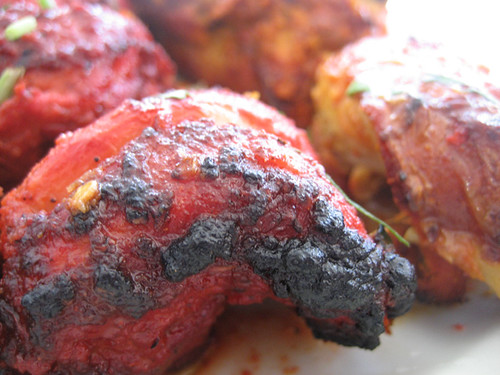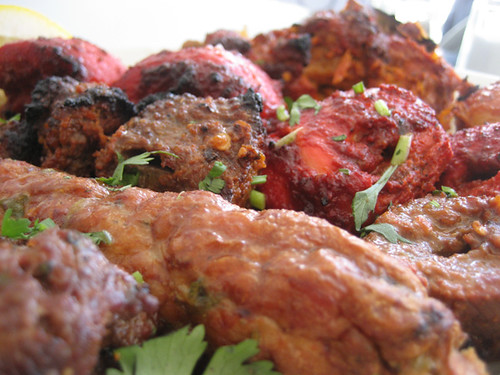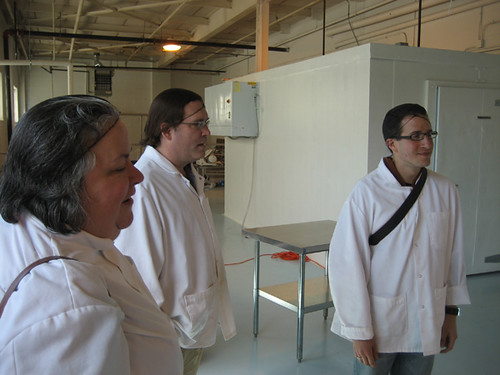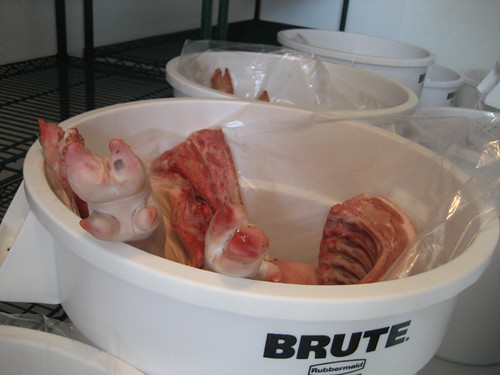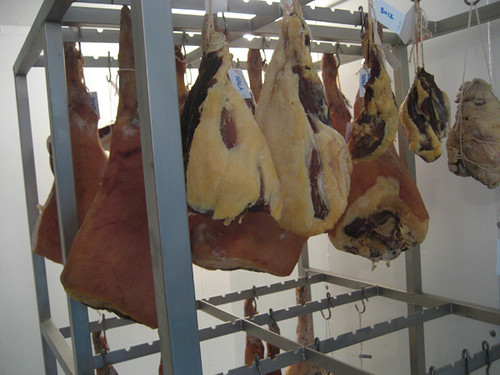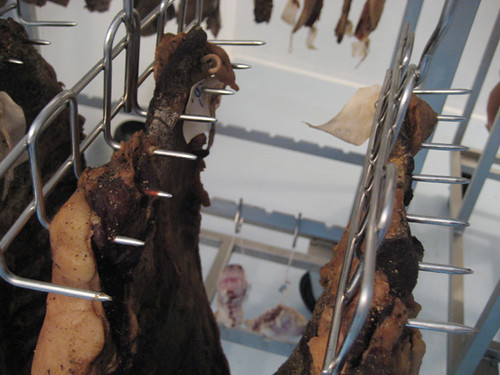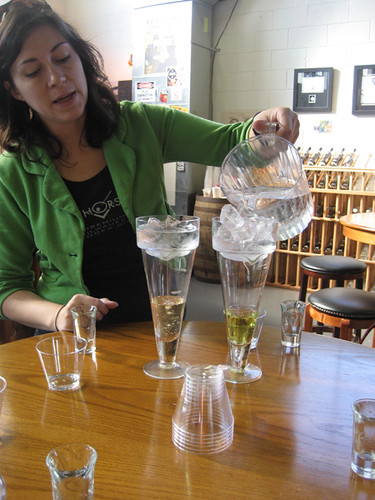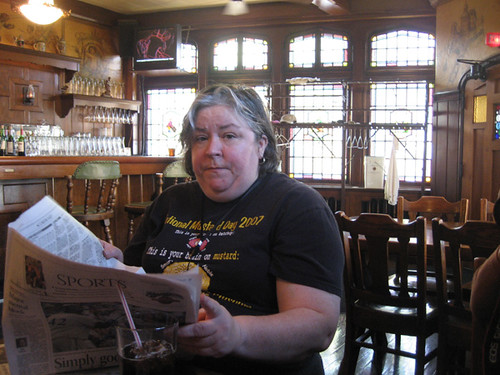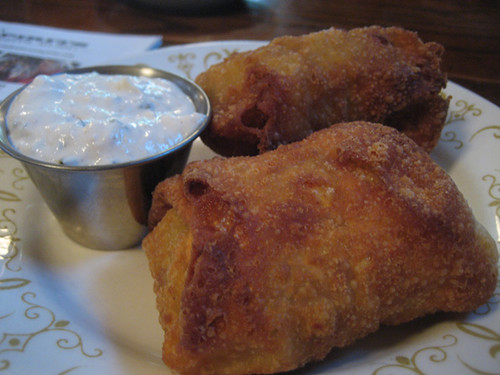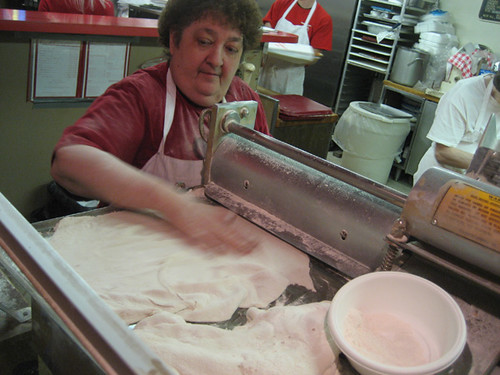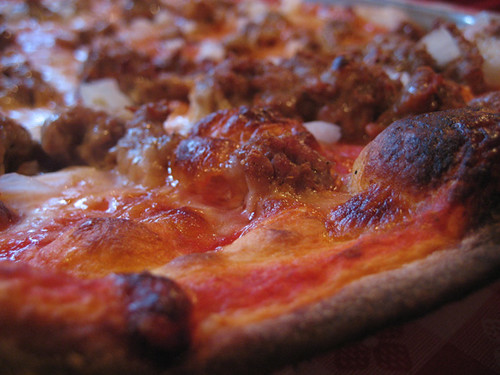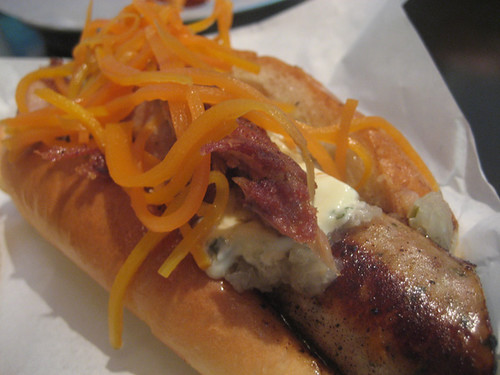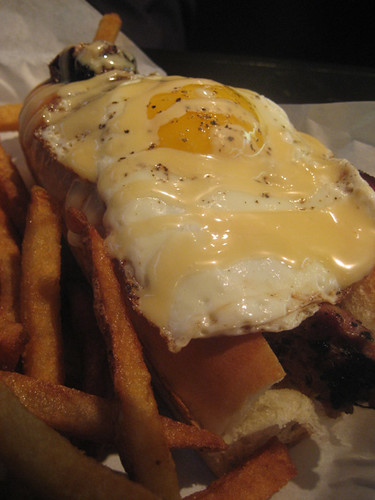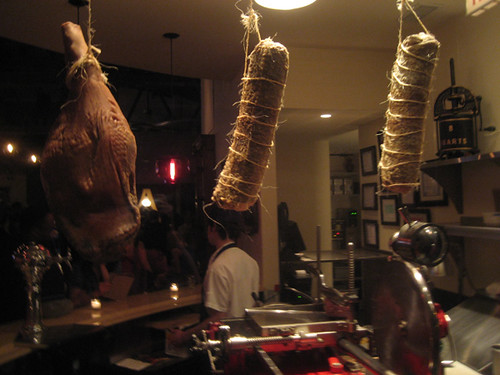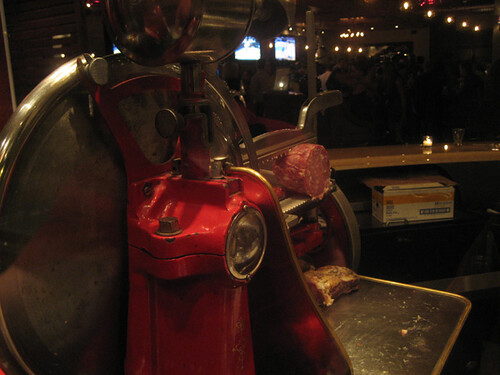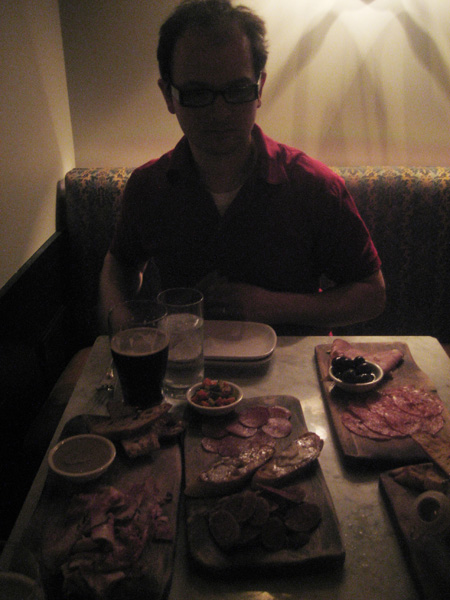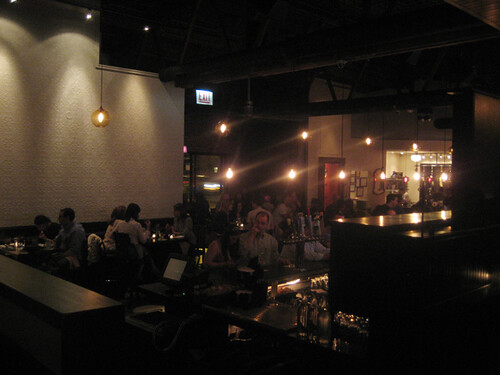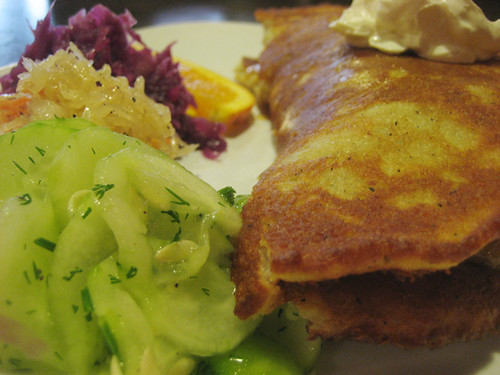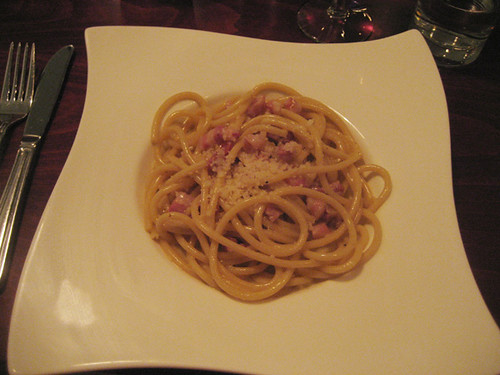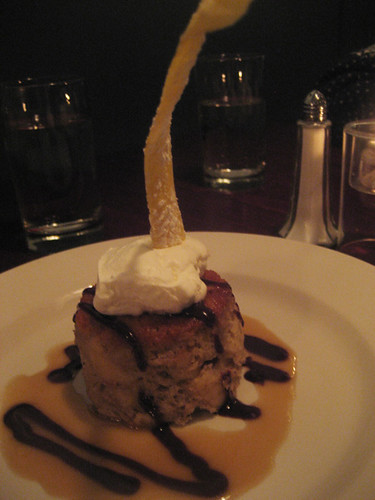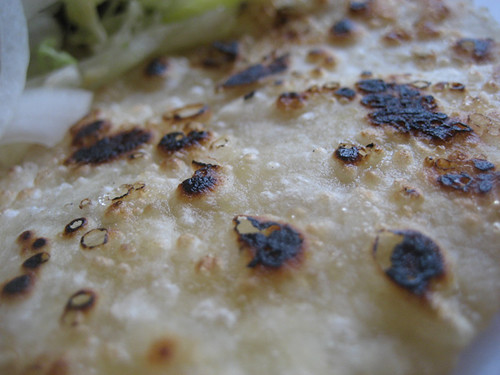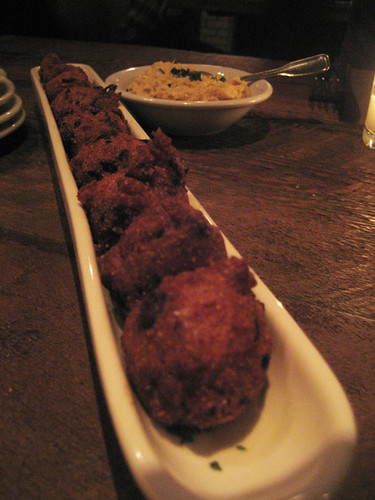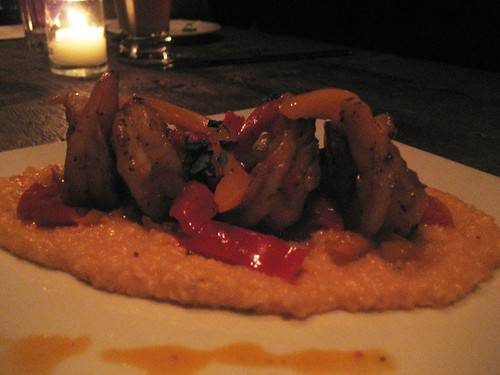I like the comfy, quiet neighborhood in which I live, Roscoe Village, except when I need to find food within a few dozen yards of my house, at which point my choice basically becomes, which of three bars do I want to 1) eat a hamburger at, 2) watch ESPN at (in the way I watch it, which is to say, I pretend to watch it so they never suspect I’m a Soviet infiltrator who could care less about sports) and 3) enjoy this month’s beer special of Bass or Shock Top or, if they’re really going cutting-edge, Goose Island 312. At that point I might as well be living in Moline in 1987, for all the blessings of culinary civilization at my disposal.
I understand that the good people of Logan Square have somewhat similar complaints, for a hip-and-happenin’ neighborhood they long seemed to be a magnet for places that looked like they should be interesting but weren’t, but at the moment they easily have me beat with two hot new gastropubs opening within a few months: Revolution Brewing and Longman & Eagle. I ignored both for a while, fearing crowds, hype, the long drive down Western from Belmont to Diversey, etc. But then I was impressed by Longman & Eagle’s entry at Baconfest (dehydrated bacon on a waffle), and decided to check it out one night— liking it enough to return later in the week with a friend.
The English pub-y name (which sounds more like the heroes of a Japanese cartoon show to me, but never mind) goes with the usual cultural dissonance of the gastropub movement, which is to say the music was old-timey (I don’t mean Johnny Cash, I mean Charlie Poole), the beer was Belgian, and the food is eclectic comfy-chic-modern. You could pick that apart sociologically, I suppose, but since it seemed a reasonable cross-section of my own psyche, I found it downright welcoming.
The menu is largely small plates-ish, so the first time I went I ordered a sausage I thought would be an appetizer portion. Somehow I’d missed the the fact that it was actually listed under sandwiches, and so my plans to try multiple things went down in flames at the very beginning. The sausage (made in-house) was fine, the combination of sauerkraut and apple pleasant enough, but… I whimpered inwardly at the thought of all the fine things that might be mine, but wouldn’t now. Finally I decided not to eat most of the bread (boring anyway) and then to ask the bartendress for a recommendation of a single dish, of modest size, which would redeem my evening. She recommended the scallops served on braised oxtail— a classic combo and a delectable dish, perfectly tender scallops atop soothingly comfy and earthy shreds of beef.
That made me curious enough that when a multi-food-writer dinner planned for last Wednesday fell apart like a 70s band on Behind the Music, I grabbed David Hammond and we returned to L&E to work through more of the menu. Basically we ordered everything that kind of sounded like the scallop dish— a lamb cotechino, a tete de cochon with quail egg, a duck egg with beef tongue hash, potato agnolotti in a bordelaise sauce. And what we learned was… things that sound that much alike kind of taste that much alike, too. It was largely our own fault, I’m sure, but there was a definite similarity of braised meat, savory glaze, egg, that made the dishes a little too much alike. They all seemed fine, but by the time the last one arrived, it was a little hard to get excited.
For that reason, again hoping for a Hail Mary pass at the end of the meal, we tried to break out of the rut (our lamb cotechino, escargots and shaved foie gras rut) by ordering something out of left field— a wild boar sloppy joe, topped with fried sage. It was the one thing from this meal that’s really stuck with me all week, although since the meat sort of tasted like bolognese sauce on a bun, you could argue that we still hadn’t managed to get very far from the braised meat in savory sauce paradigm.
Okay, so Longman & Eagle has a lot of representation of that one style of cooking on the menu. As opposed to what, the place at the end of my block with eight different burgers? That’s still a little more variety and a lot more adventurousness than I can walk to in five minutes in any direction, and the good news is, they seem to be kicking out specials and new ideas at a fairly prodigious rate, so it shouldn’t take too much effort to avoid monotonous ordering, even if I basically botched it twice. The music is good, the atmosphere, though crowded, seems easygoing, the bartendress the first time and the waitress the second time were both personable and interactive (though I did wait ten minutes at the bar for my beer while a male bartender made the same overambitious artisanal cocktail twice for somebody, rather laboriously each time; not every place needs to be The Violet Hour). I liked this place and the next time I’m thinking I’ll just grab a burger and a beer down the street, remind me to take five minutes and drive here instead.
* * *
Encouraged by my success in finding a likable, livable bar-restaurant in Longman & Eagle, I decided to give Revolution Brewing a try. It’s a renovated vintage space, a big dark wood bar with an onsite brewery visible behind glass in the back, and it’s very quickly drawn a sports bar, baseball cap on backwards crowd, which has led to some carping that it’s no better than a suburban brewpub of the Rock Bottom type. (We’ll leave aside the crushingly large ironies in an agent of Anglo gentrification like this filling a Latino neighborhood with revolutionary iconography. At least there isn’t a big mural of Che behind the bar, like a chic bar in the tourist section of Playa del Carmen used to have.)
I tried exactly one beer, a Wit, so I can’t fairly judge the brewmaking skills, but like Rock Bottom’s beers, it seemed decently made but a little thin. (I later saw someone get a tasting flight of the beers, which would have been ideal for blogging purposes, but if that’s on the menu, I never saw it.) As far as food, I planned to try something with a little ambition to it, but looking at the menu, I just couldn’t get excited about any of the entrees— a Flemish stew was more braised food, salad nicoise just didn’t seem to fit the joint— and I wound up ordering, yes, a hamburger, off the list of Kuma’s-esque oddball burger creations. In my case, it was the Farm Burger, which I ordered out of curiosity, possibly morbid, as to whether beets could really work as a hamburger topping.
The answer is a provisional yes, the horseradish sauce was a smart choice for counteracting the beets’ sweetness with some bite. Still, before this hamburger was gone, I was already tired of it. One, because the fried egg on top cooled to an unpleasant rubberiness before I was done. Two, because the frozen hamburger patty was as bland as any beef I’ve put in my mouth. I don’t expect every bar, even a gastropub, to serve something artisanal-farm-name-dropped-special, but this was so foodservice-truck-ordinary that it simply wasn’t up to the job of supporting exotic condiments and toppings. A place like The Bad Apple can put subtle toppings like bernaise on burgers because the meat has such flavor of its own. Not here.
It’s hard to say what makes one bar work as a welcoming, lively place with a personality of its own, and another not. At first glance Revolution, with its onsite brewing capability, would seem to have the edge over Longman & Eagle, with its well-chosen list of craft beers du jour. But partly because of the ambitious, restless food menu, partly because the room was more intimate, partly because they just seemed more excited about it all, I quickly found Longman & Eagle to be the one that was welcoming and intriguing, while Revolution already seemed to be settled into a check-off-the-list-of-requisite-c. 2010-menu-items, serve-the-tourists groove that sucked the life out of the room. I’ll probably go back sometime to try more of the beers, and see if there’s a fine brewmaster being ill-served by the restaurant side here, but when I want a night out of the house in a comfy, interesting pub, Longman & Eagle is more likely to draw me.
P.S. Hammond has an interesting observation on the egginess of our choices here.
Longman & Eagle
2657 N. Kedzie
(773) 276-7110
Revolution Brewing
2323 North Milwaukee Avenue
(773) 227-2739


 Posted in
Posted in 
